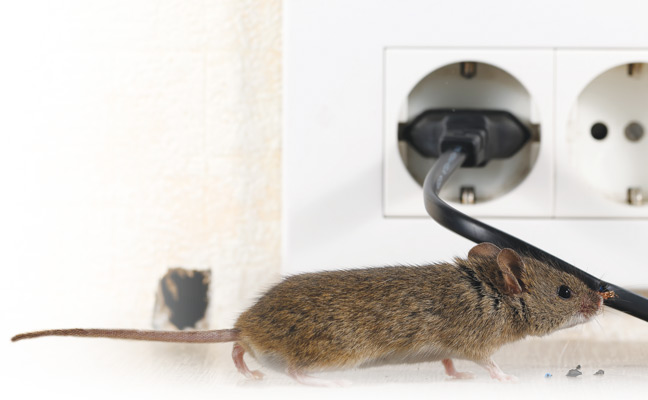
PHOTO: ISTOCK.COM/TENRA
The house mouse (Mus musculus) is the most commonly reported rodent pest in the United States. When discussing mouse integrated pest management (IPM) strategies with clients, technicians often cite the need to eliminate food resources inside a building — as well as the importance of sealing up exterior entry points to eliminate mouse immigration from outdoors. To do this, all holes the size of a dime or larger must be sealed.
Mouse anatomy is the reason for these size guidelines. The minimum measurement recorded for a house mouse skull is 1/4 inch in height and 3/8 inch wide. By comparison, the skull of a Norway rat (Rattus norvegicus) measures 1/2 inch high by 3/4 inch wide. If a mouse can fit its head through a hole, it’s a safe bet that it can squeeze its flexible body through, too.
Chew on this
So, is it really possible to physically exclude mice by sealing up gaps and filling in holes? Can’t they just chew through whatever construction material we use to keep them out? After all, rodents’ ability to gnaw through even the hardest materials is the stuff of legends — how can rubber door sweeps and foam sealants keep them at bay? These are all valid questions, but one study* found that if the temptation to gnaw was eliminated by sealing in warm air currents and the odor of potential food sources, the likelihood of a rodent getting into a building is reduced.
Because the house mouse can squeeze its flexible body through gaps as small as 1/4 inch, technicians must be diligent in their exclusion efforts. In the battle against infestation by these rodent pests, every precaution should be employed to ensure that infestations are eliminated quickly, and buildings are maintained rodent-free in the future. Exclusion efforts will keep mice from coming back, and keep your customers from calling back.
*Reference: Glass G., Johnson J., Hodenbach G., Disalvo C., Peters C.J., Childs J., Mills, J. (1997). “Experimental evaluation of rodent exclusion methods to reduce hantavirus transmission to humans in rural housing.” American Journal of Tropical Medicine and Hygiene 56:359-64
Leave A Comment